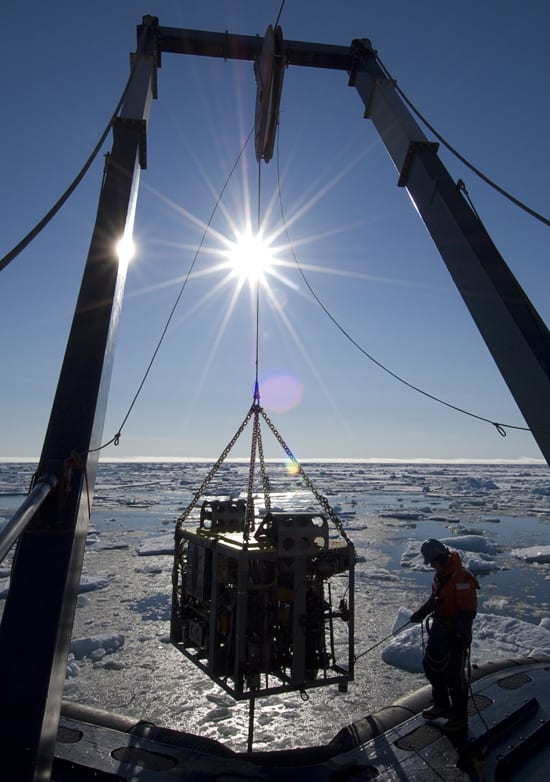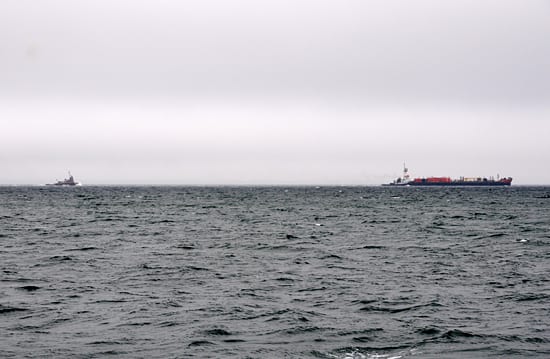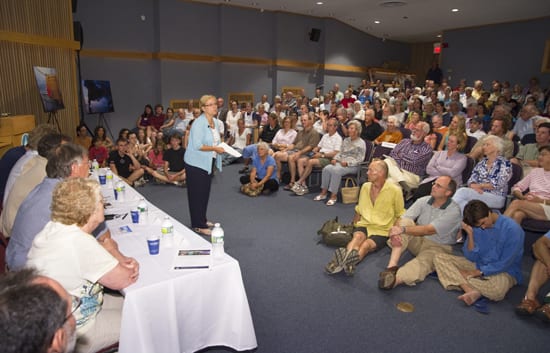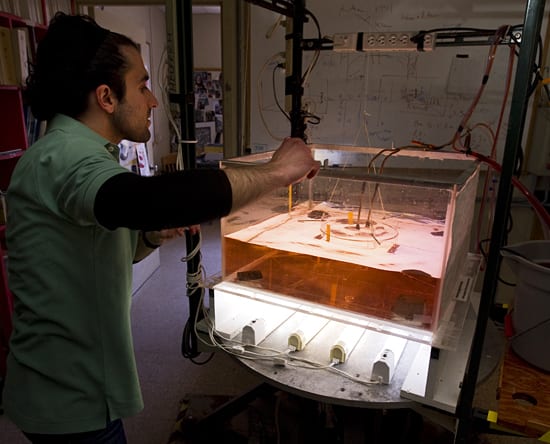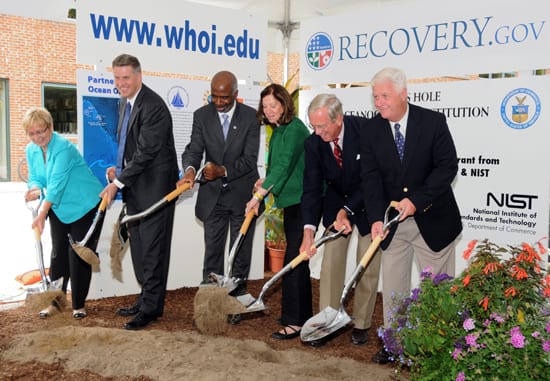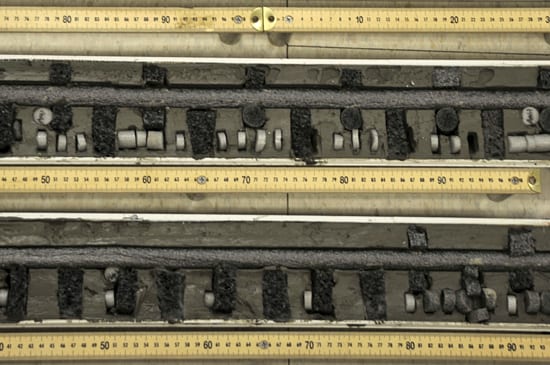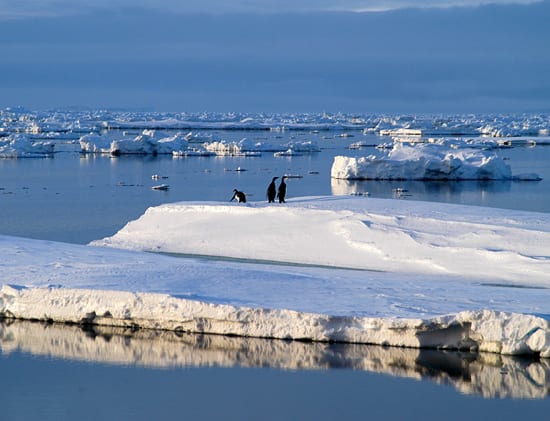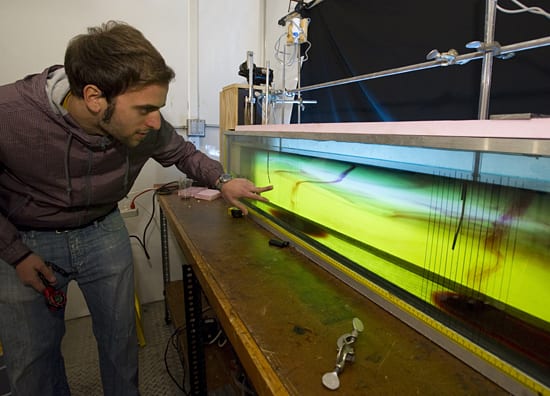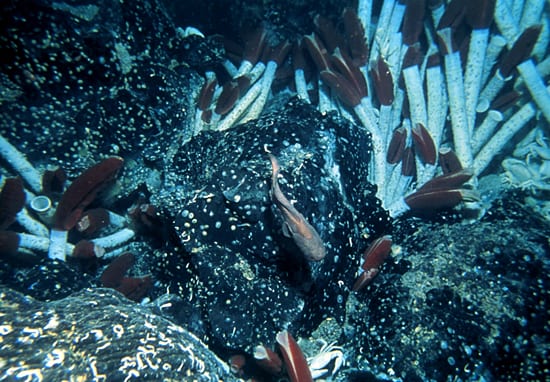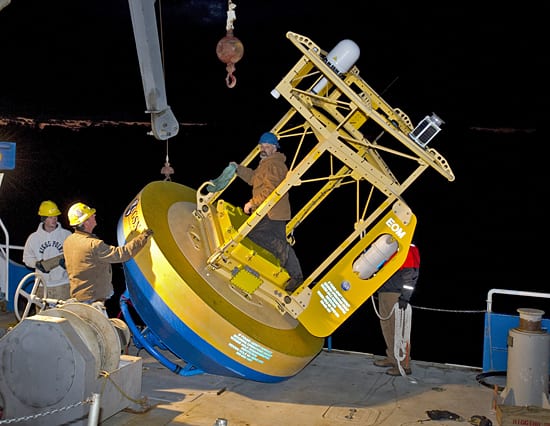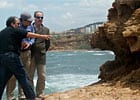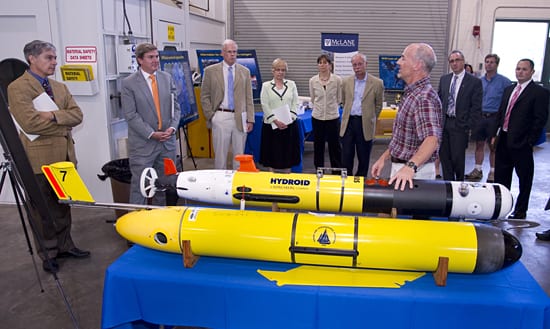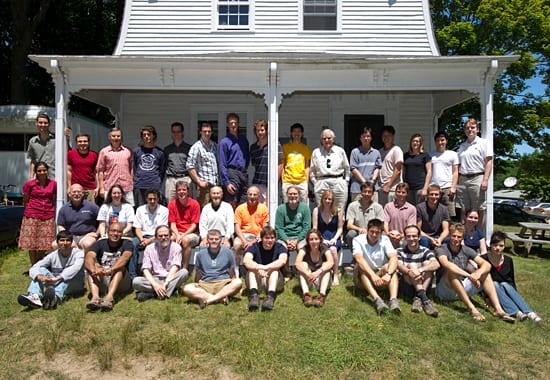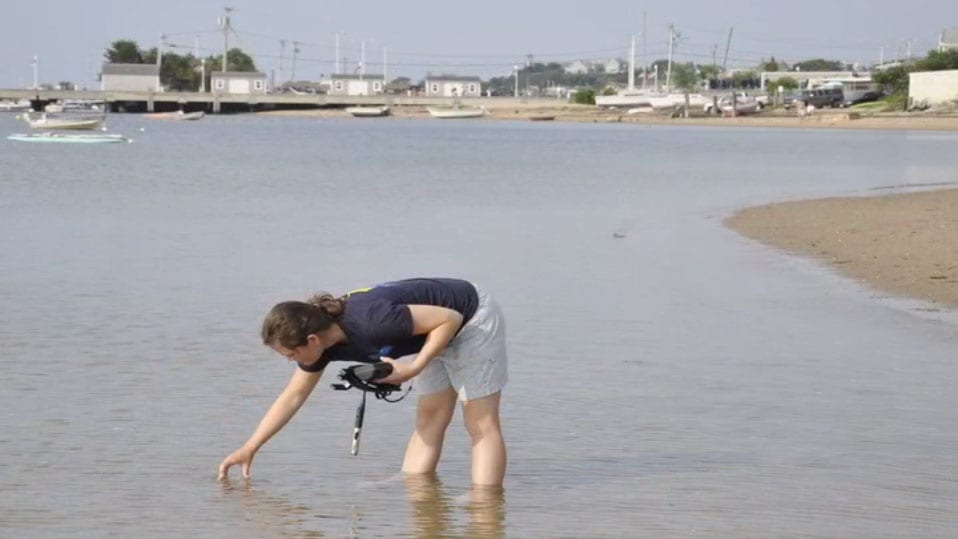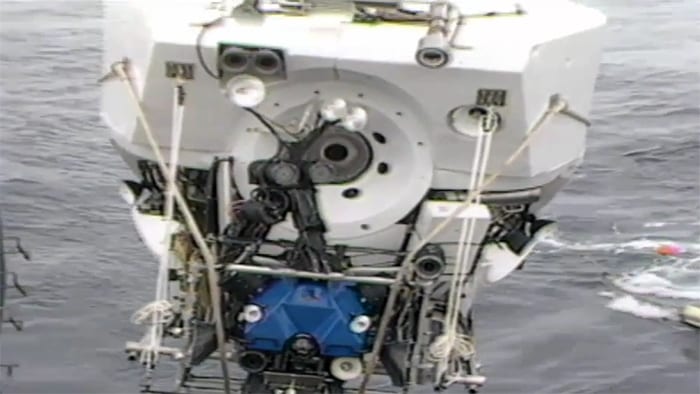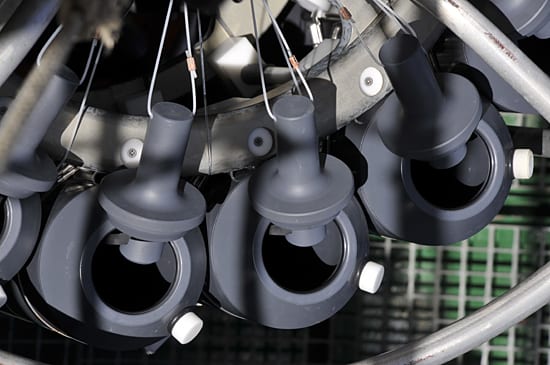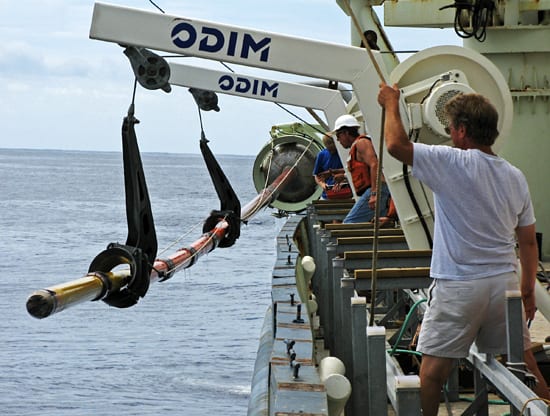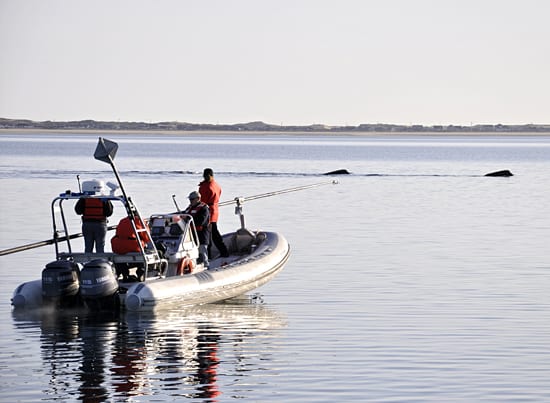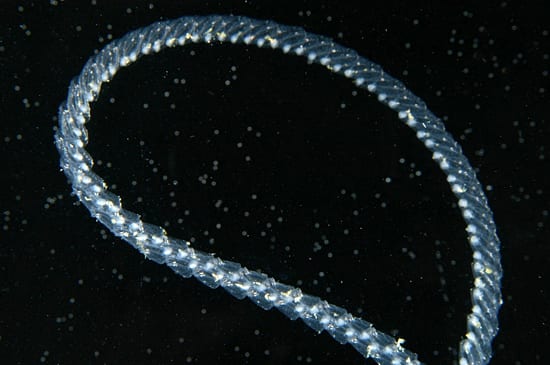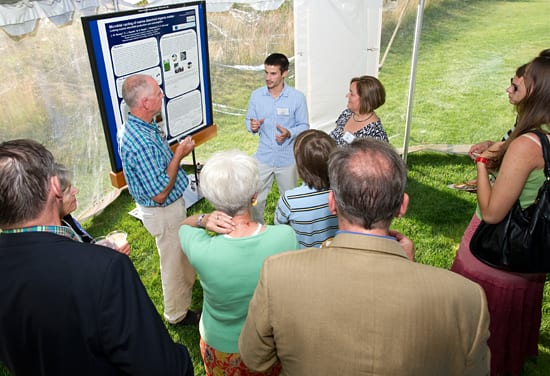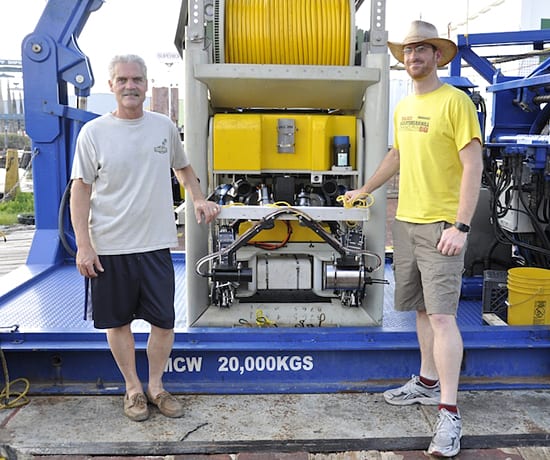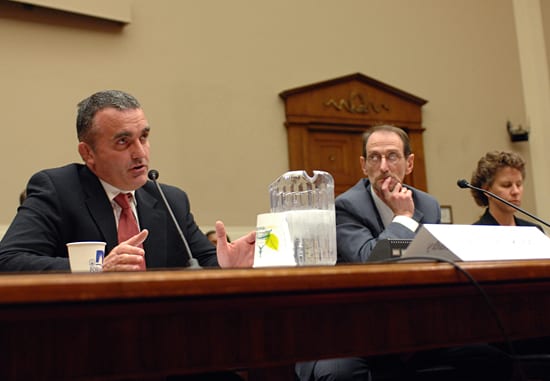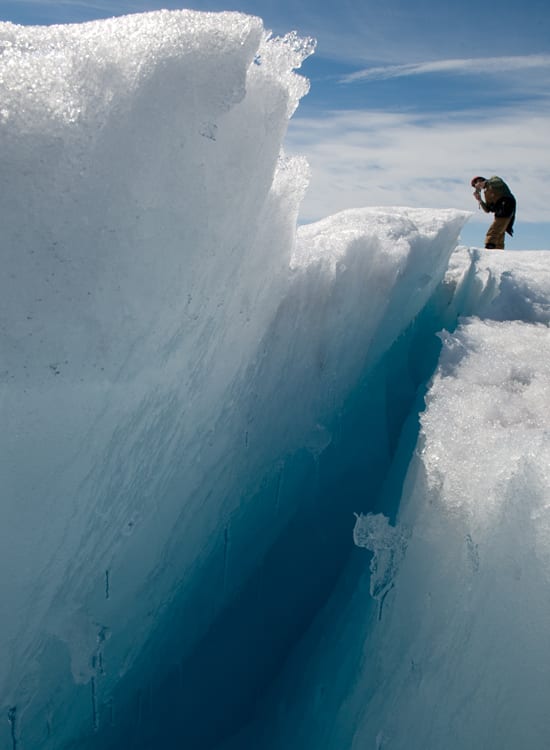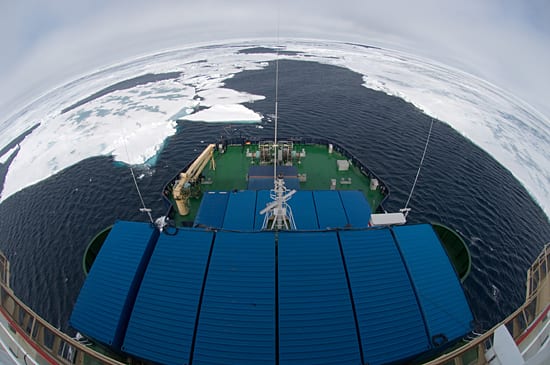Multimedia Items
A happy CAMPER
WHOI engineer John Kemp sends the tethered vehicle CAMPER off on its final mission of the second Polar Discovery expedition. CAMPER was specially built to allow scientists to image and…
Read MoreTug, tug
A tugboat follows another tugboat pushing a barge through Buzzards Bay, Mass. The Massachusetts Department of Environmental Protection now requires state-dispatched tugboats to escort double-hulled tank vessels carrying 6,000 barrels…
Read MoreWHOI in the Gulf
Susan Avery, president and director of WHOI, welcomes community members to the public forum, “WHOI in the Gulf of Mexico,” held on July 29, 2010. A 5-member panel of scientists…
Read MoreStudying ocean flow, from Rome to WHOI
Domenico Mussardo, a guest student from the University of Rome “La Sapienza”, spent spring 2010 at WHOI working with Claudia Cenedese, who studies ocean currents with laboratory experiments using tanks…
Read MoreBreaking ground
Equipped with an $8.1 million federal Recovery Act grant and shiny, new shovels, the Woods Hole Oceanographic Institution (WHOI) celebrated the groundbreaking of its new Laboratory for Ocean Sensors and…
Read MoreSlices of history
A little goes a long way in sediment cores, but there’s not much left of this one laid out horizontally in a case. Seafloor sediment accumulates slowly as dead organisms…
Read MoreSouthern Ocean sentinel
Daniel Bogorff of the Subsurface Mooring Operations Group snapped this image of penguins while on the R/V Aurora Australis enroute to Casey Station in Antarctica. The focus of the expedition,…
Read MoreColorful experiment
Guest Student Alessandro Ramoni conducts a “fjord experiment” in WHOI’s geophysical fluid dynamics laboratory. Ramoni, from the University of Rome “Tor Vergata”, worked with WHOI scientists Claudia Cenedese and Fiammetta…
Read MoreNear Galapagos, 1979, a new world found
Before the discovery of hydrothermal vents in 1979, no one expected to see abundant life in the deep sea, where darkness and cold temperatures reign. But chemical-rich fluids gushing from…
Read MoreIt’s a buoy for OOI and new WHOI laboratory
The first buoy designed for the Ocean Observatories Initiative (OOI) is loaded onto the RV Connecticut for testing ops south of Nantucket earlier this year. The OOI program is one…
Read MoreEarthquake Research
WHOI research and economic impacts
WHOI senior engineer Mike Purcell briefs state officials Pat Larkin, executive director of the John Adams Innovation Institute, and Greg Bialecki, Massachusetts Secretary of Housing and Economic Development, on WHOI’s…
Read MoreA fluid environment
Participants in the 2010 Geophysical Fluid Dynamics (GFD) program gather on the Walsh Cottage porch for a group photo. The GFD Program, which began in 1959 at WHOI, is an…
Read MoreSun, Sand, Waves…and Bacteria?
Elizabeth Halliday spent her summer at the beach, but she wasn’t swimming or sunbathing. Instead, the MIT/WHOI Joint Program student traveled to Provincetown three times per week to collect samples…
Read MoreImaging Titanic
Bill Lange, Director of WHOI’s Advanced Imaging and Visualization Laboratory (Woods Hole Oceanographic Institution) Originally published online August 1, 2010
Read MoreWhat is it?
Water-collecting cylinders called Niskin bottles stand ready, spring-loaded caps open at both ends. They are most often attached to a CTD rosette sampler–a frame holding a circle of bottles around…
Read MoreCore product
Aboard the Knorr, from foreground, WHOI researchers Bill Curry and Jim Broda, along with Rolf Ambjornsen of the Norwegian marine services company Odim, help retrieve the first sediment ever collected…
Read MorePlaying tag
To learn more about what whales do when they dive beneath the surface, scientists use a digital acoustic recording tag, or D-tag. The small device, designed and developed at WHOI,…
Read MoreDeep Sea Jewelry?
Transparent as glass and just as fragile, a meter-long chain of salps loops into a crystal necklace for an Antarctic Neptune. These gelatinous animals filter food out of the ocean…
Read MoreAn afternoon of science
MIT/WHOI Joint Program student in Biology, Jamie Becker, (center with light blue shirt) discusses his research with guests at the recent Afternoon of Science, during the science poster reception under…
Read MoreRapid trip to measure oil droplets
WHOI Senior Scientist Cabell Davis (left) and Joint Program graduate student Nick Loomis flank an ROV mounted with a small digital holographic camera before a rapid research trip in the…
Read MoreGiving testimony on the Gulf oil spill
Marine chemist Christopher Reddy, Director of the WHOI Coastal Ocean Institute and specialist on the fate of petroleum in the marine environment, is studying the Deepwater Horizon oil spill, part…
Read MoreNew crack
Ian Joughin of the Polar Science Center Applied Physics Lab at the University of Washington (UW), examines a large, angular crack in the ice during a 2008 expedition to Greenland.…
Read MoreA fish-eye lens view
In this fish-eye lens view, the icebreaker Oden is headed north into what will be thicker ice during a 2007 expedition to the Arctic Seafloor. At the top of the…
Read More
